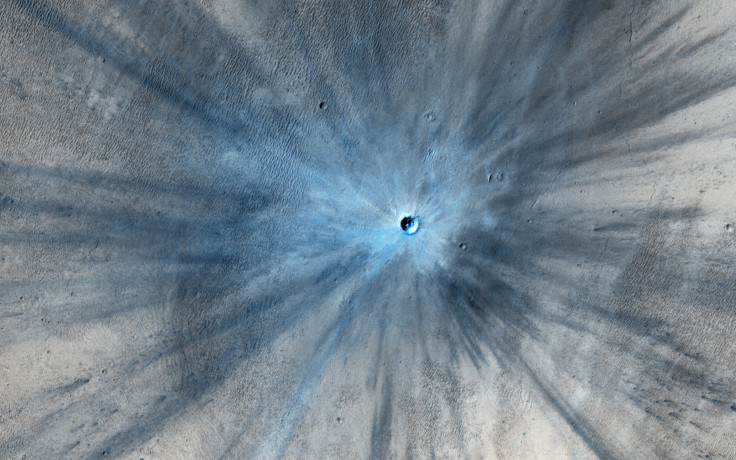Name A Mars Crater For $5: Uwingu Wants To Give The Public A Chance To Put A Name To 500,000 Martian Craters

There are 500,000 mapped and observed craters on Mars, and for just $5, you can name one of them.
It's a project launched by startup Uwingu, encouraging public participation to name the craters and help raise money for space exploration, research and education.
You won't own a piece of Martian real estate, and the name will be an unofficial one, used specifically with Uwingu maps, but that could change with enough support.
Uwingu announced its plans to create a citizens' map of Mars. According to the startup's successful Indiegogo campaign in 2012, Uwingu is a "for profit LLC, consisting of prominent astronomers, planetary scientists, former space program executives, and educators who passionately want to create new ways for space exploration, research, and education to be funded." Some of its corporate sponsors include Ball Aerospace & Technologies Corporation and Lockheed Martin.
Smaller craters start at $5 but the price for naming a crater on Mars is based on size. Larger craters can cost $250 or $500 and as much as $5,000. According to Uwingu, "Proceeds from the creation of Uwingu’s Mars crater map will, like other Uwingu products, help fuel The Uwingu Fund to provide grants for space research and education—meaning that with every name you contribute you’ll be helping to fuel future space activities." Uwingu hopes to add options to name mountains on Mars in the near future.
Looking for something bigger than a crater? Uwingu lets you nominate names for exoplanets, too. For $4.99, a user can nominate a name and the public can vote, each vote costing $0.99. If a name gets 1,000 votes, the user who submitted it can then "adopt" an exoplanet.
While the money will go to funding projects, the names might never be officially approved. There are set naming conventions in place that could prevent the widespread use of named Martian craters.
Naming conventions go through the International Astronomical Union and task groups nominate names for planets, stars and planetary features that are later put to a vote.
Recently, the IAU announced the names of Pluto's two smallest moons, P4 discovered in 2011 and P5 discovered in 2012 by SETI Institute, and the team opened up naming to the public. The poll's top choice, Vulcan, was not allowed, but the IAU approved Kerberos as P4's new name and Styx for P5.
Planetary feature names, when first discovered, are nominated by an IAU task group followed by voting and approval. When higher-resolution images become available, new features may be observed and any individual can suggest a name for these new surface or geological formations, notes IAU. On Feb. 18, the IAU Working Group for Planetary System Nomenclature, WGPSN, approved the name of a mountain on Mars, and in December 2013, the group announced the naming of 10 craters on Mercury.
© Copyright IBTimes 2024. All rights reserved.






















